Tuesday, October 1, 2024
Today was our travel day from Lisbon to Porto, with some sightseeing along the way. We woke up early to have our luggage outside the door by 6:30 am for pick-up and transfer. Afterward, we headed downstairs to enjoy our final buffet breakfast at Dom Pedro. Then, we boarded the tour bus and traveled for about an hour before making a stop in Óbidos to explore. After disembarking there, the large Smithsonian Journey group was divided into smaller groups, each led by its own guide. Somehow, Jane and I ended up in different groups and we spent much of the Óbidos tour exploring separately.
Óbidos is a charming medieval town, known for its well-preserved architecture, cobblestone streets, and a stunning hilltop castle. We entered through the impressive main gate (Porta da Vila), adorned with decorative tiles and topped with a small chapel. The overcast skies, accompanied by intermittent misty rain, created a surreal ambiance as we wandered through narrow, winding alleys lined with stone buildings and whitewashed houses adorned with colorful flowers.
—— Rambing around Óbidos ——
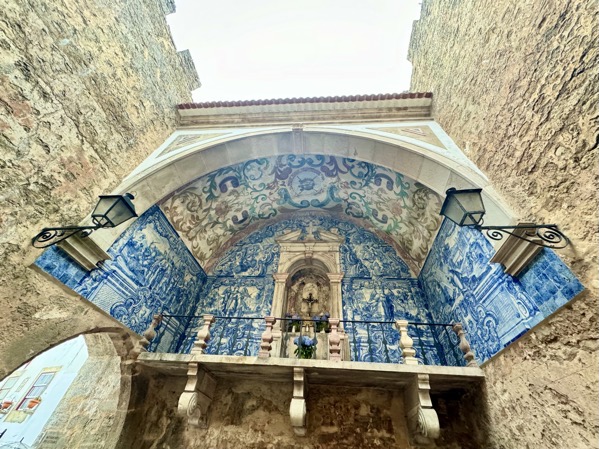
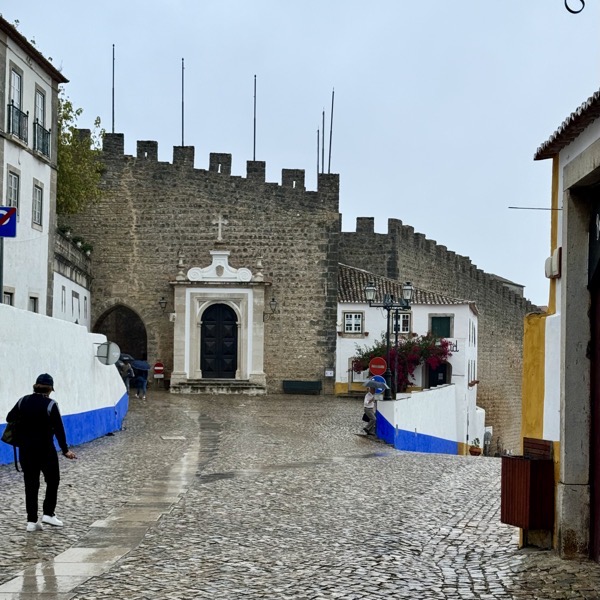
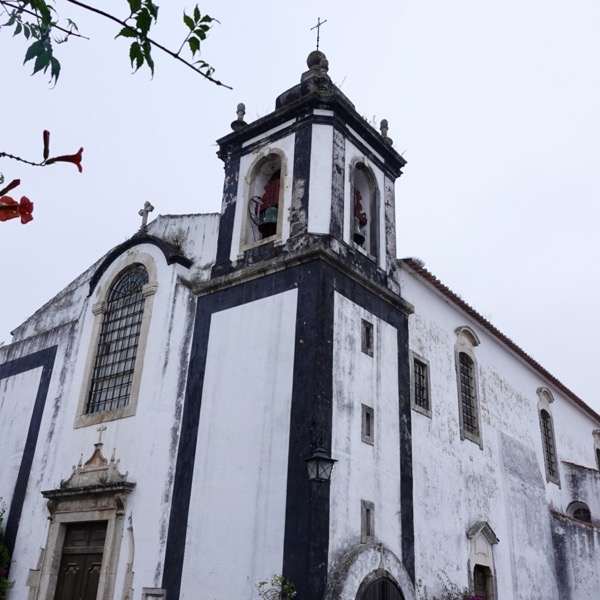
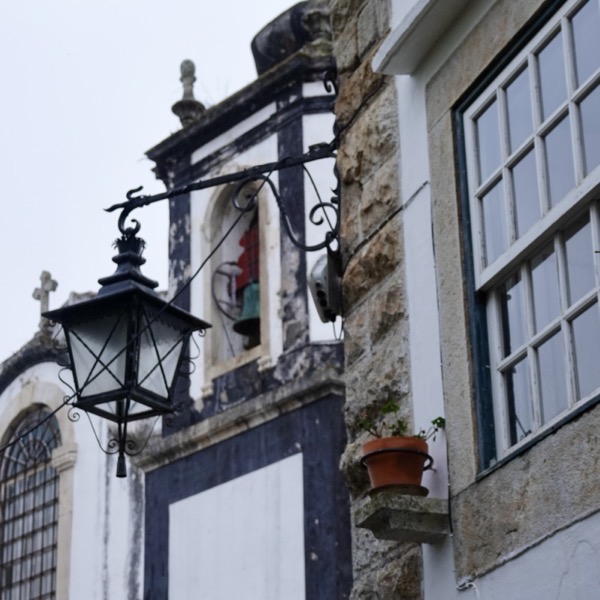
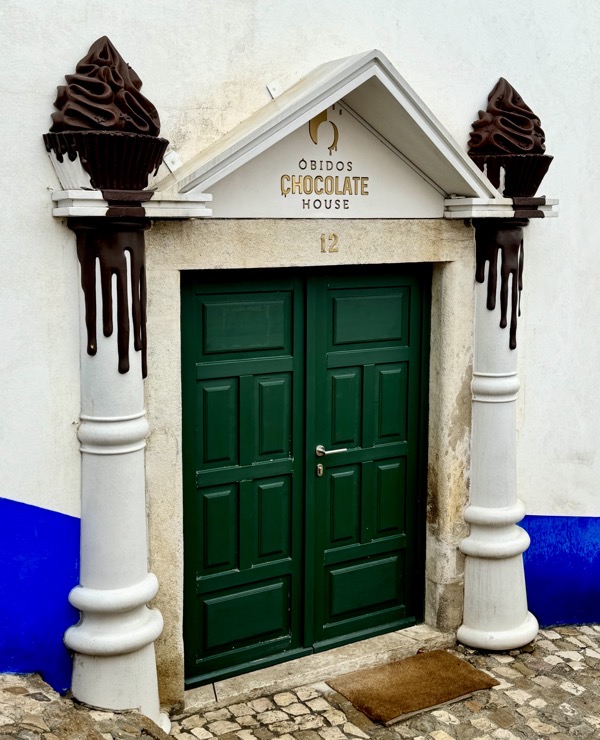
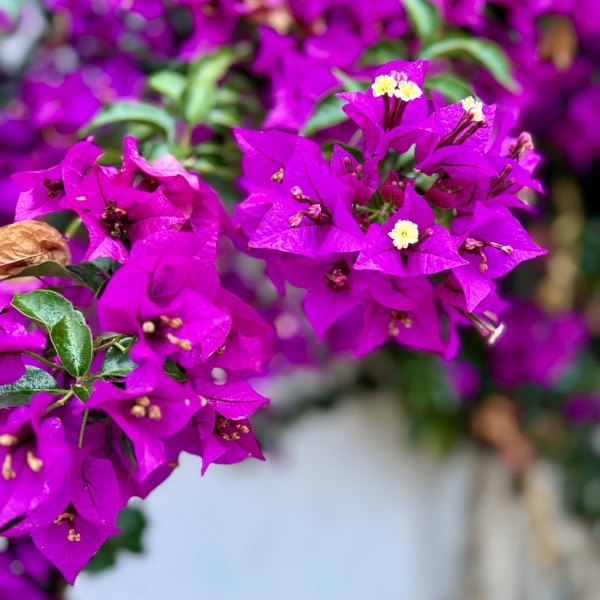
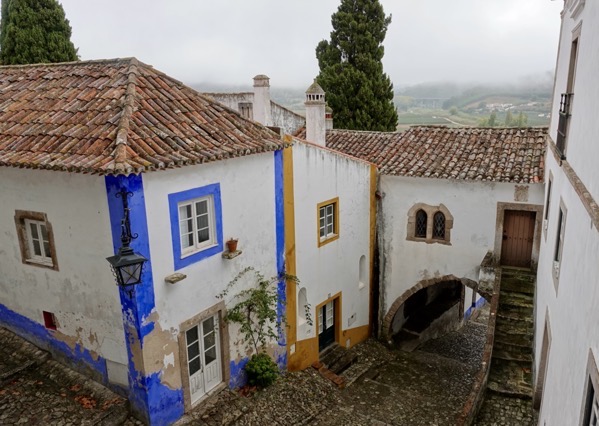
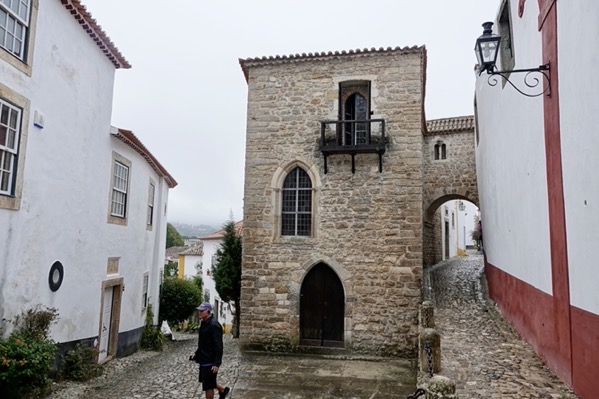

Our first group stop was the Almshouse Church (Igreja da Santa Casa da Misericórdia), a historic landmark built in the 16th century as part of a hospital and charitable institution. It served not only as a place of worship but also as a sanctuary for the poor. Following significant renovations in the 17th and 18th centuries, the church’s interior now boasts a beautiful altarpiece and intricate tilework.
—— The Almshouse Church ——
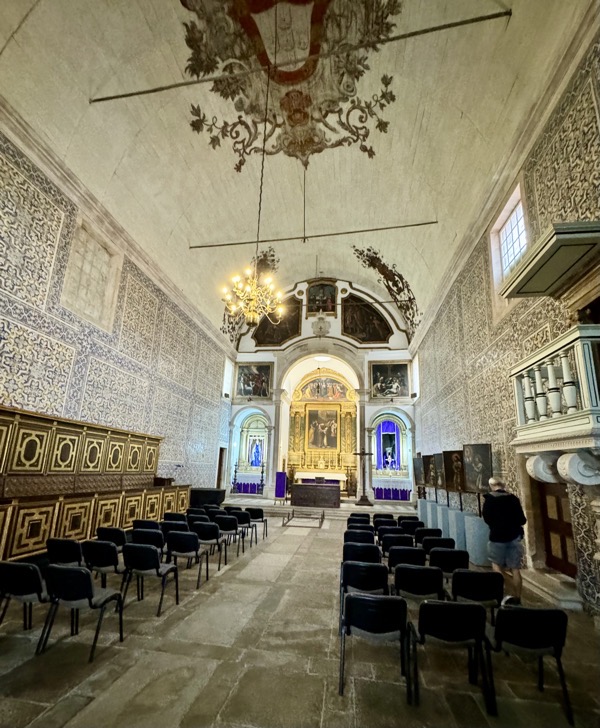
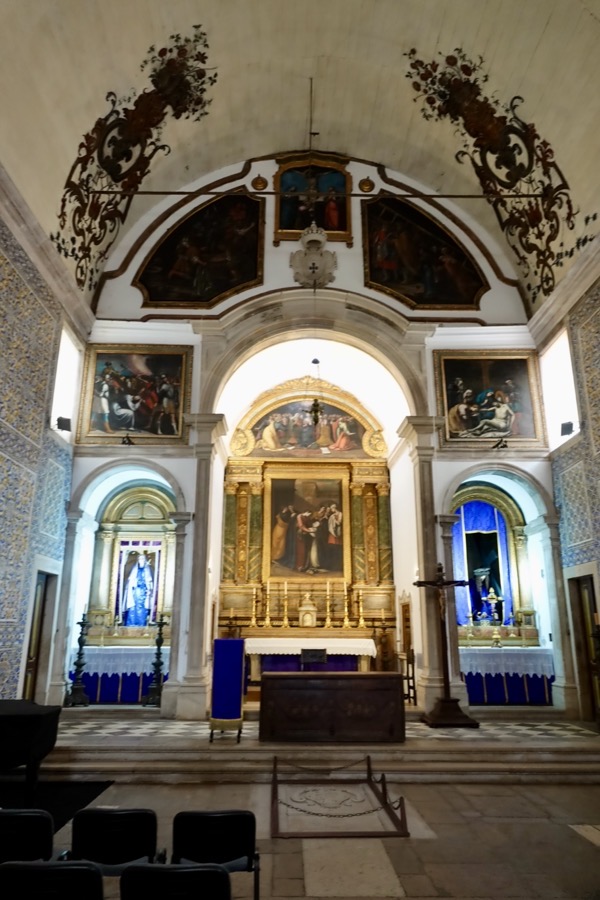
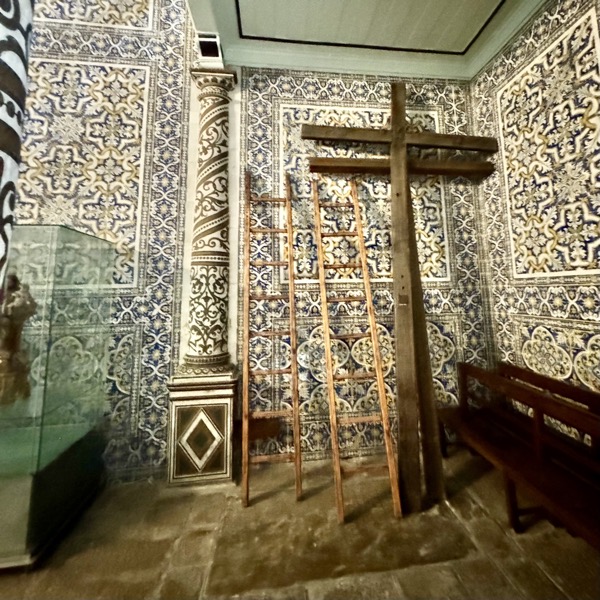
Our next group stop was the Church of Saint Mary (Igreja de Santa Maria). This historic church, originally built in the 12th century, features a blend of architectural styles, with roots in Romanesque and Gothic design, later enriched with elements of the Manueline style. The church, which once served as the chapel of the royal palace, featured walls adorned with traditional ceramic tiles (azulejos) depicting scenes from the life of the Virgin Mary, its namesake.
—— Church of Saint Mary ——
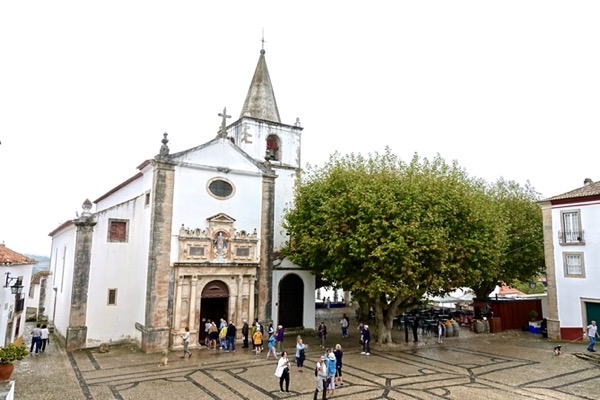
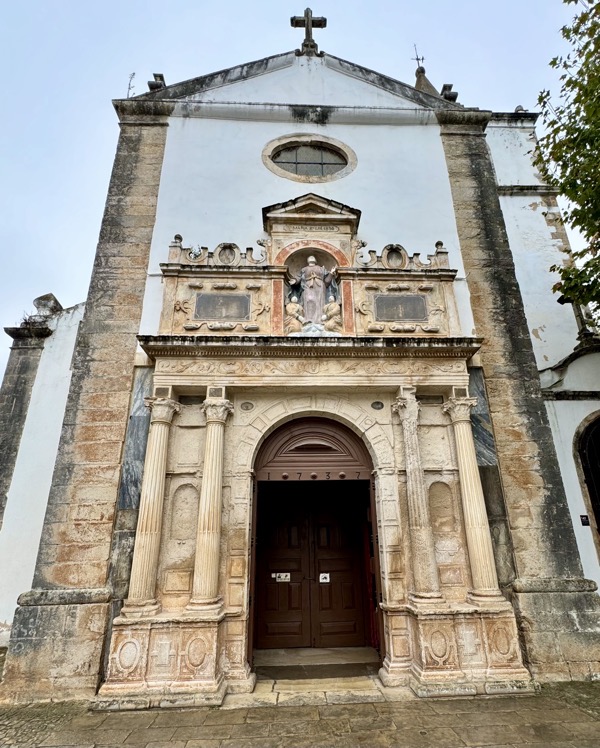
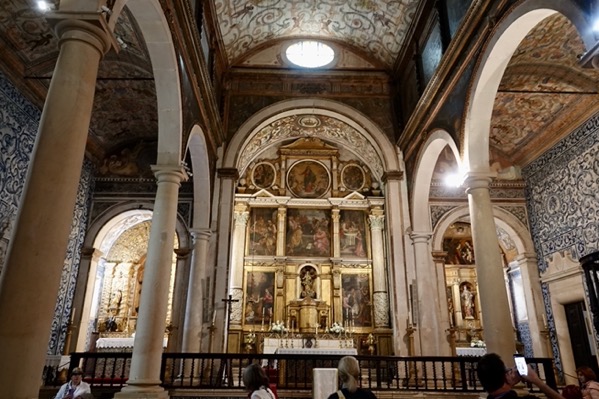
Upon exiting the church, we were allowed time to explore Óbidos on our own. I waited awhile for Jane on the square in front of the church but eventually decided to make the most of my time and ventured up hill toward the castle alone.
The Castle of Óbidos is a striking medieval fortress and similar to the church, was originally constructed by the Moors in the 12th century and later expanded by the Portuguese monarchy. Today, the castle houses a historic hotel (pousada), which would have been a fascinating place to stay. I thoroughly explored the castle’s exterior, climbing narrow walls and peering through the embrasures, taking in the stunning views of the village and the agricultural fields in the valley below.
—— Castle of Óbidos ——
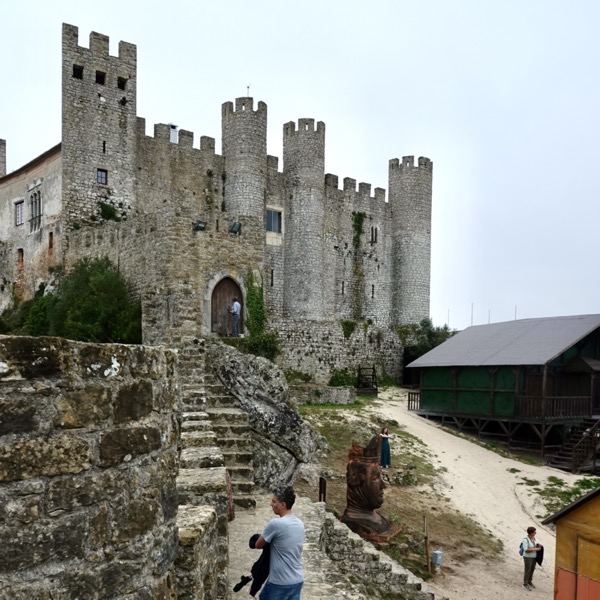
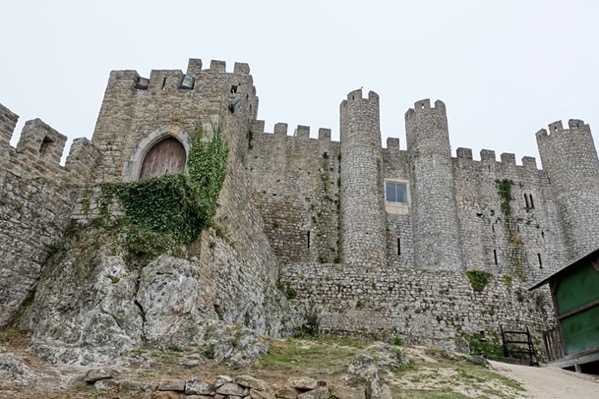
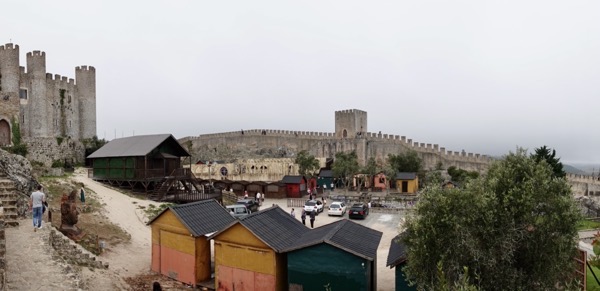
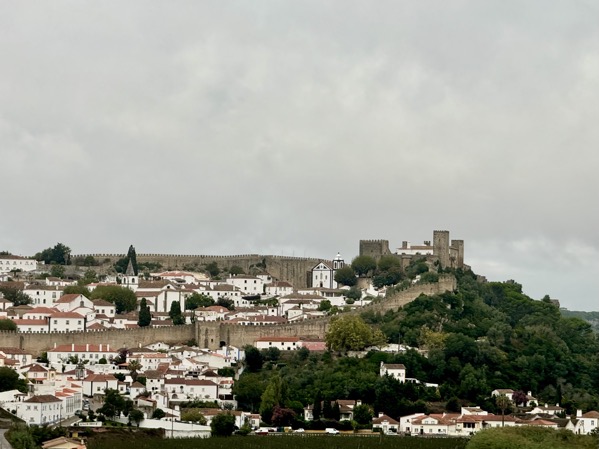
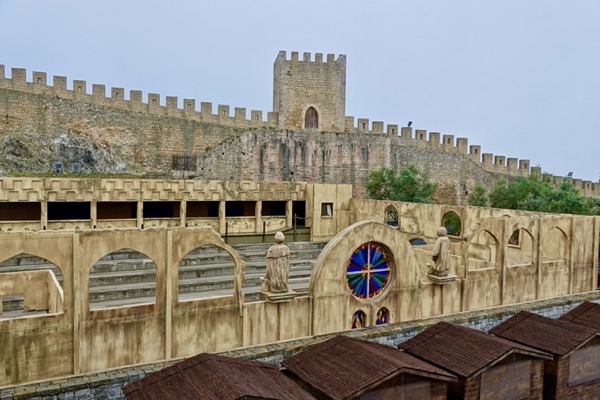
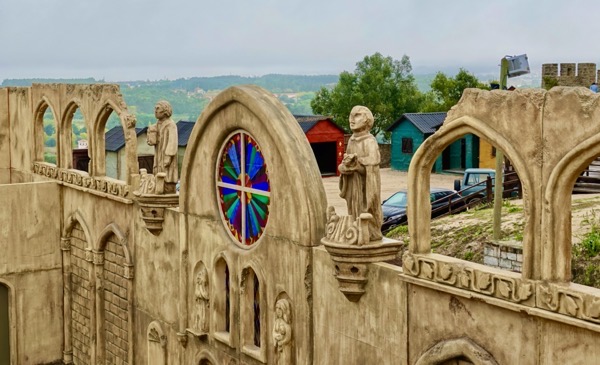
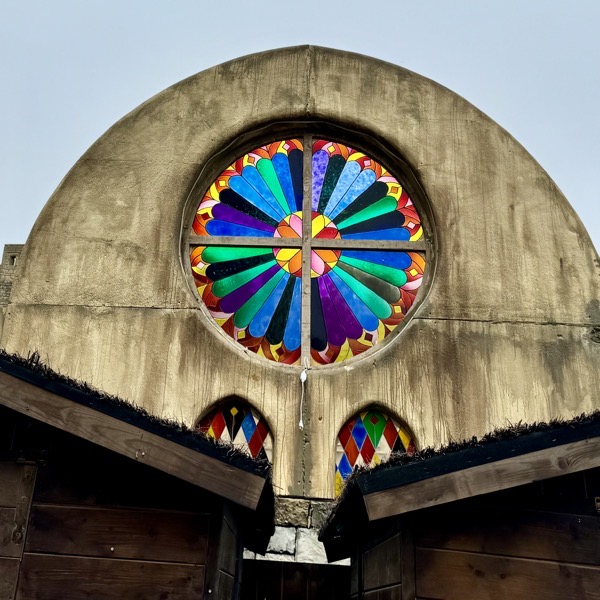
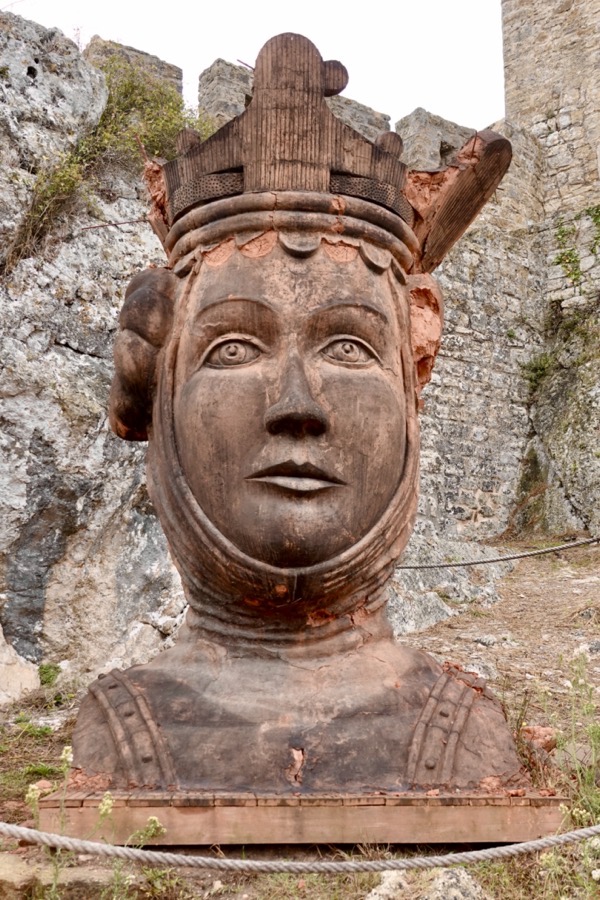
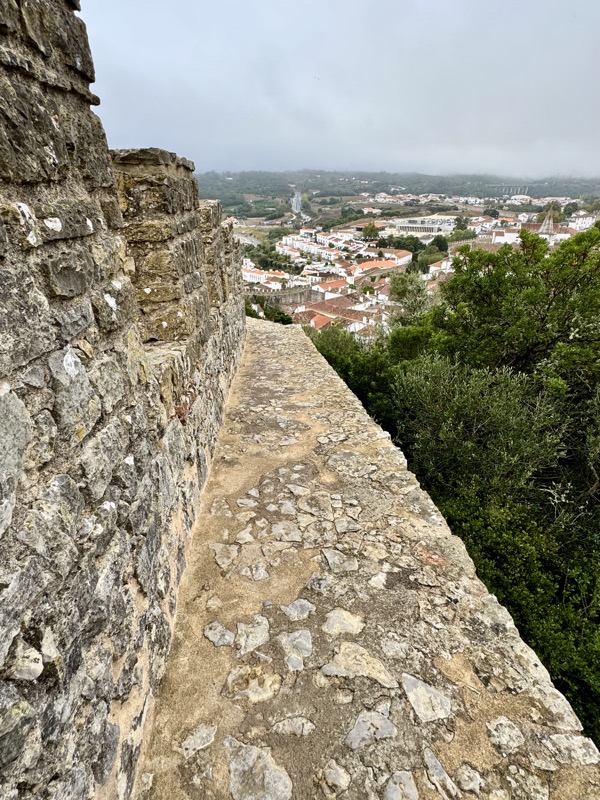
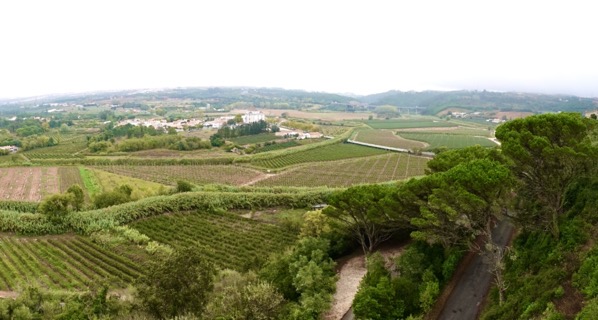
I ran into Jane as I was descending the castle, and she told me she had visited the historic Church of St. James, which has been converted into a charming bookstore. As we made our way back through the quaint town, we had just enough time to enjoy a ginja served in a chocolate cup before reboarding the bus.
—— Church of St. James ——
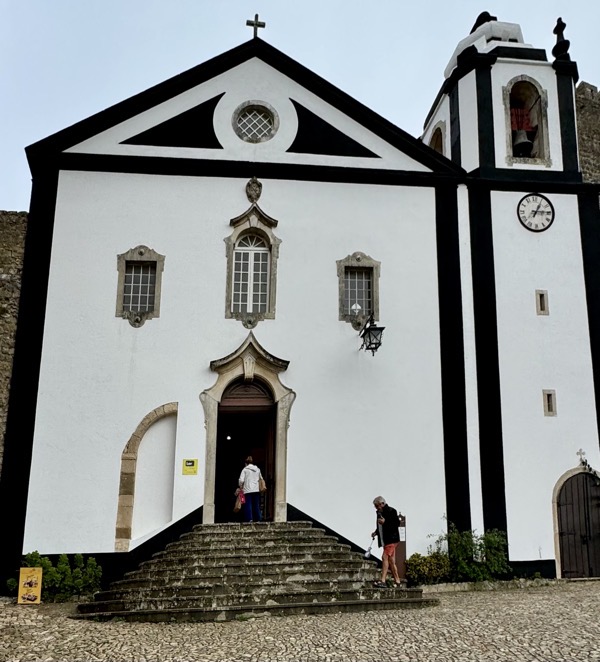
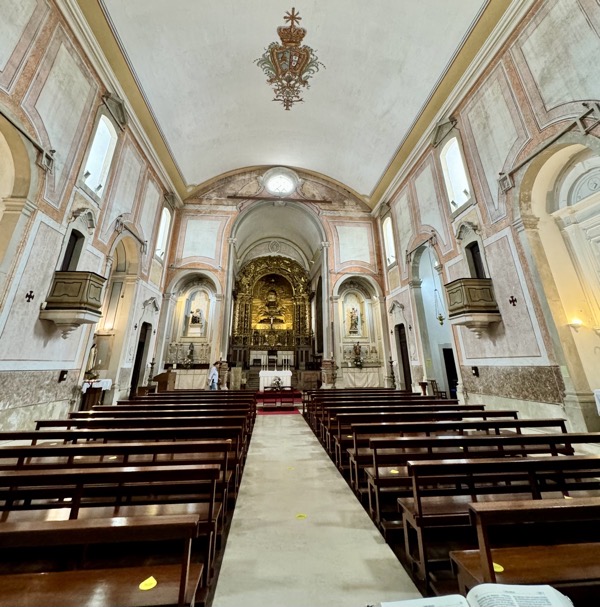
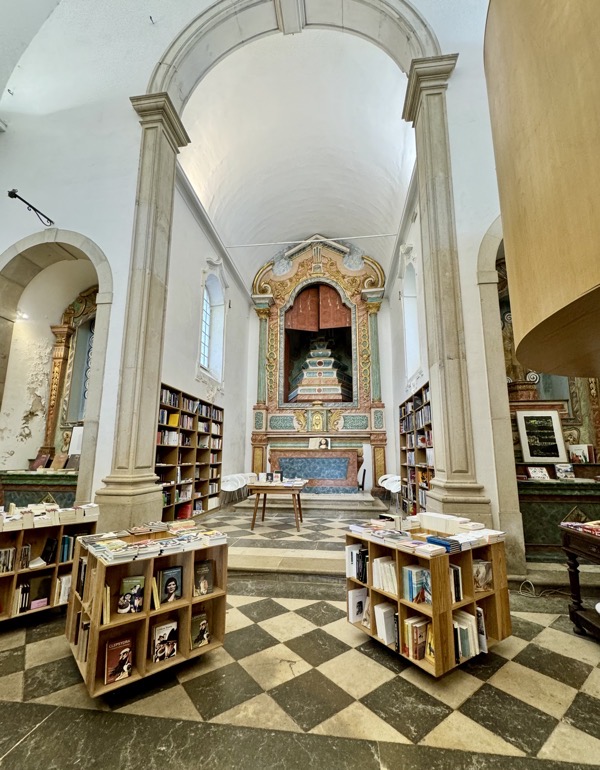
—— Ginja d’ Óbidos ——
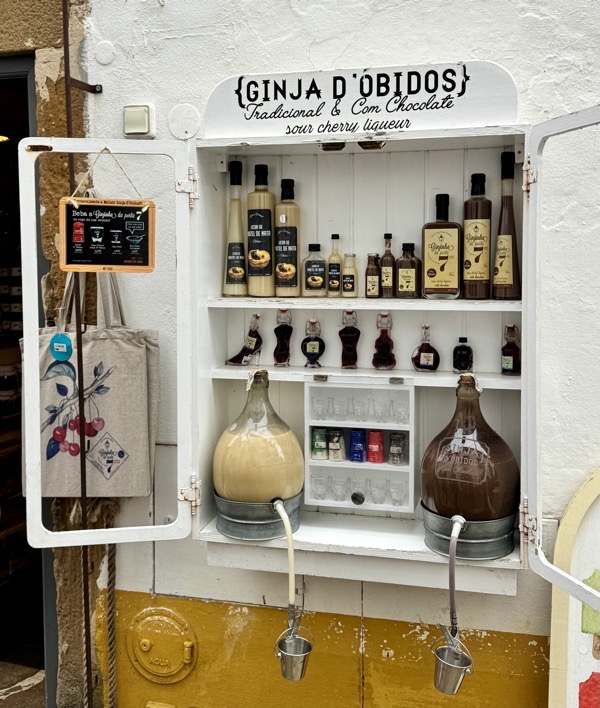

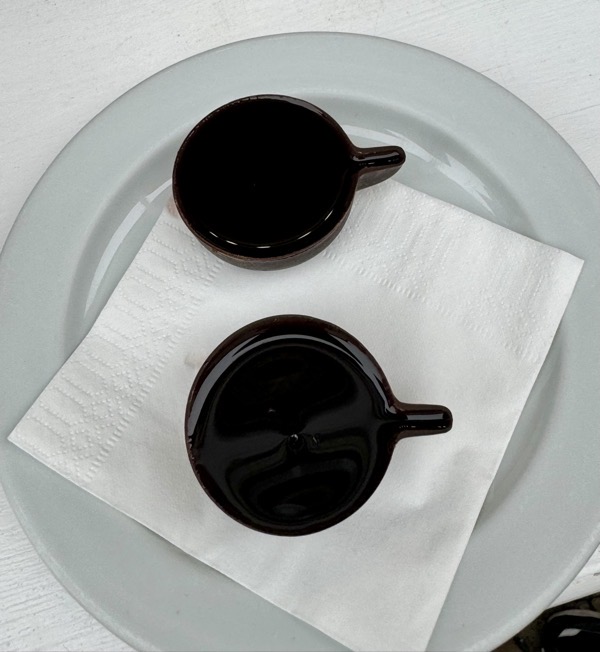
The bus continued north for about an hour and a half before stopping on the outskirts of Coimbra for lunch. We disembarked at the large, modern Vila Galé Hotel, where we were seated in a spacious restaurant. The waitstaff, well-prepared for our large group, efficiently served us a delicious, hearty lunch accompanied by unlimited wine (a standard on this tour, it seems). After indulging in a satisfying meal, we wandered around the hotel lobby and entrance before boarding the bus once more.
—— Lunch in Coimbra ——


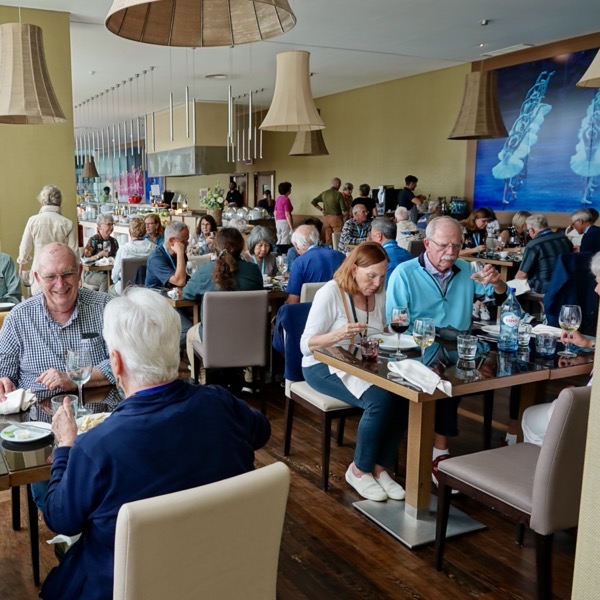
The bus navigated through the bustling traffic of Coimbra, and as we neared the university, we spotted black-robed students hurrying along. (These distinctive robes are said to have inspired J.K. Rowling, who based the Hogwarts attire on them.) We were dropped off at the edge of campus and followed our guides past several academic buildings before entering a spacious plaza. From there, we enjoyed a expansive view of the city on one side, while the plaza was surrounded by the historic architecture of the university on all other sides. The plaza featured a statue of King John III, who reigned from 1521 to 1557 and was instrumental in the development of the university.
The University of Coimbra (Universidade de Coimbra) is one of the oldest universities in Europe, founded in 1290 by King Dinis of Portugal. The campus is a blend of medieval, Renaissance, and Baroque architecture. The university has produced many notable scholars, writers, and leaders and continues to be a center of academic excellence in Portugal and beyond. Its influence extends to various fields, including law, medicine, and science, making it one of the most prestigious institutions in the country.
—— University of Coimbra Plaza ——
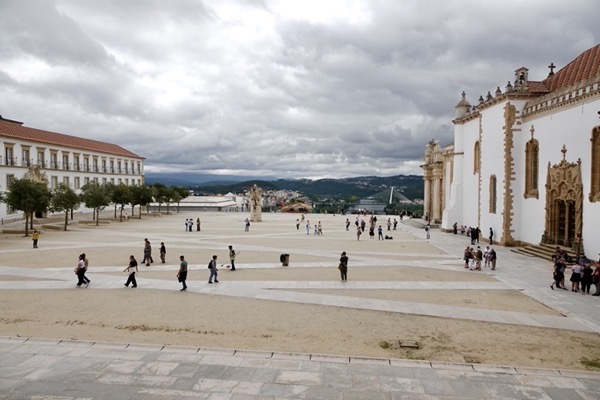
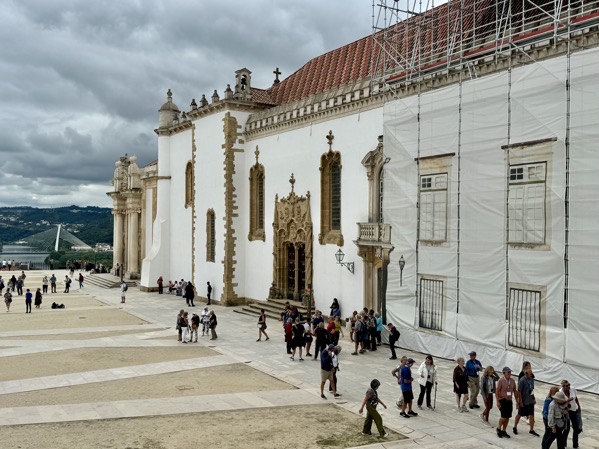
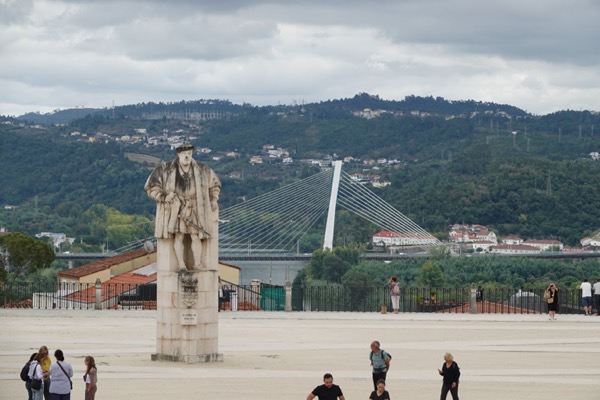
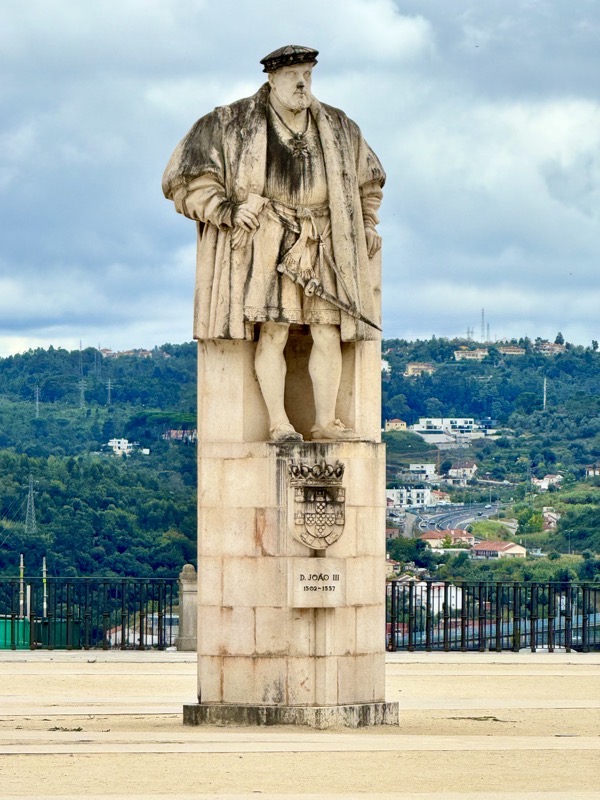
Our tour began at the Chapel of St. Michael (Capela de São Miguel), located in the Royal Palace of Coimbra, right on the university plaza. Dating back to the 16th century, the chapel was originally built as a royal place of worship and showcases a striking blend of Gothic and Manueline architectural styles. We were captivated by the chapel’s interior, with its distinctive altarpiece, ornate ceilings, and the exceptional 18th-century Peninsula Organ. The organ, adorned with chinoiserie motifs, was originally designed for a much larger church, resulting in an oversized sound output. The chapel’s tranquil and serene atmosphere makes it a significant venue for both academic ceremonies and religious events, so that it continues to play an important role in the university’s traditions.
—— The Royal Palace Building ——
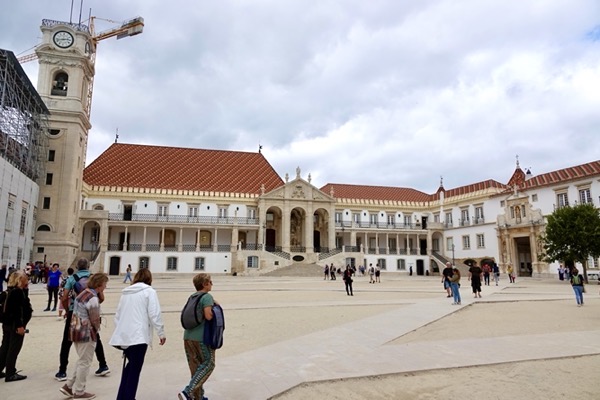
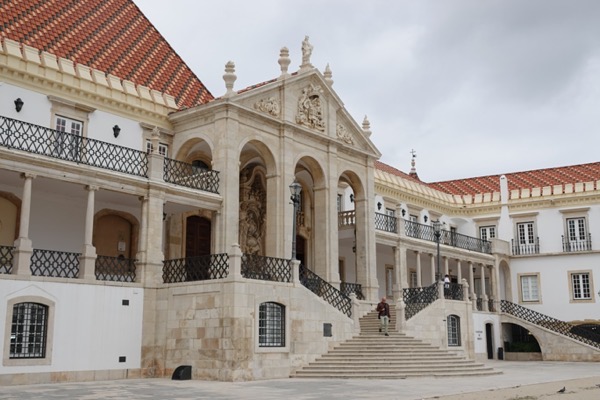
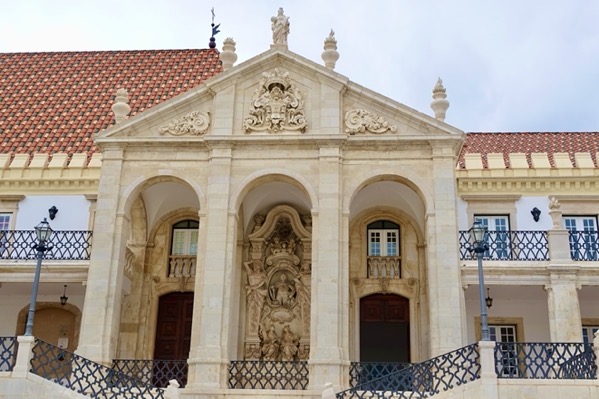
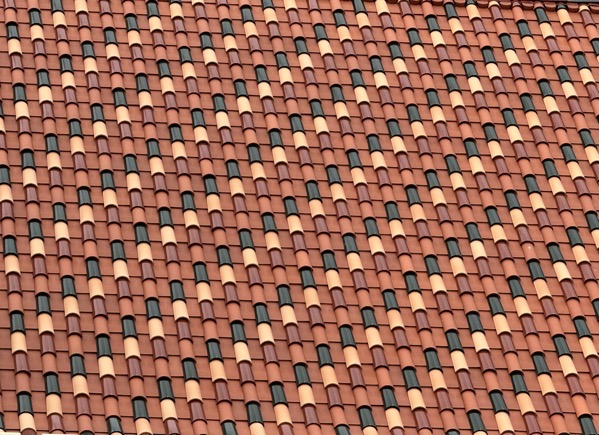
—— Chapel of St. Michael ——
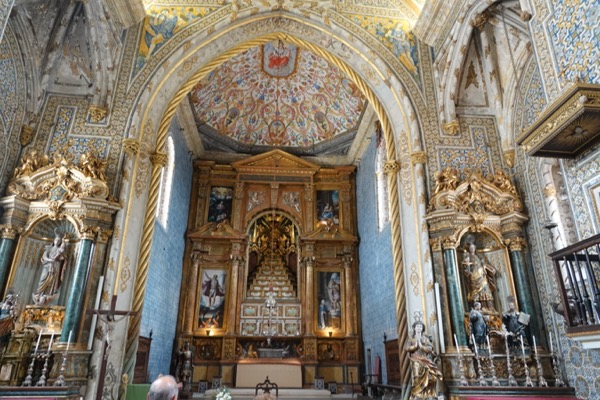
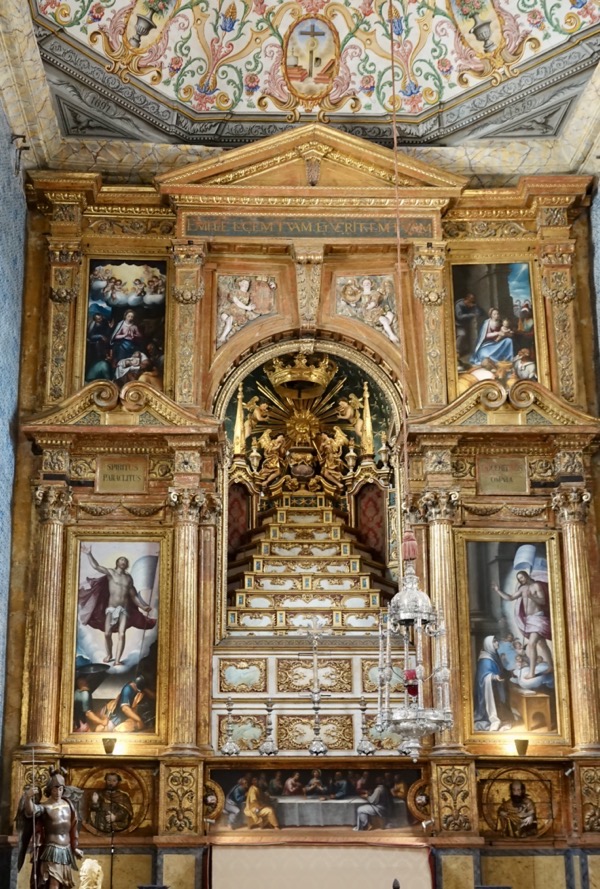
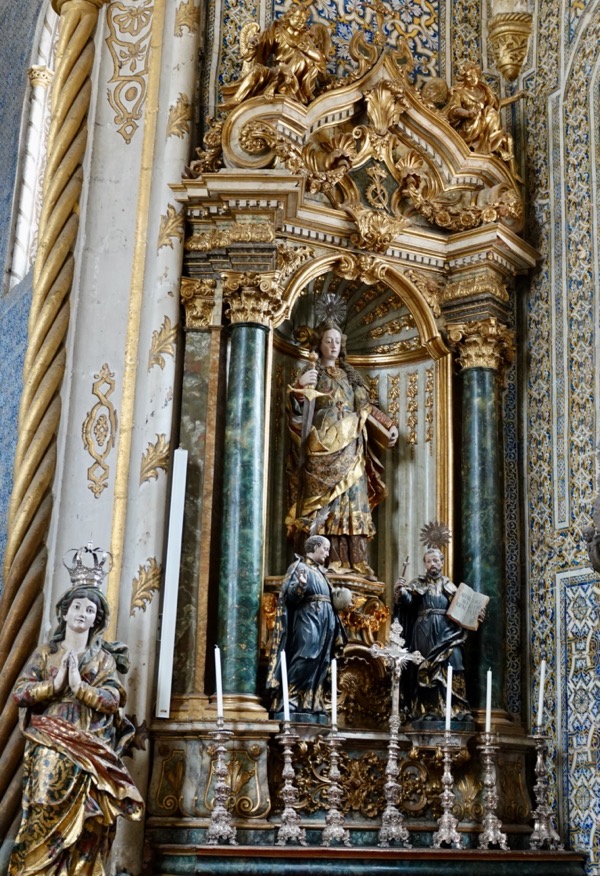
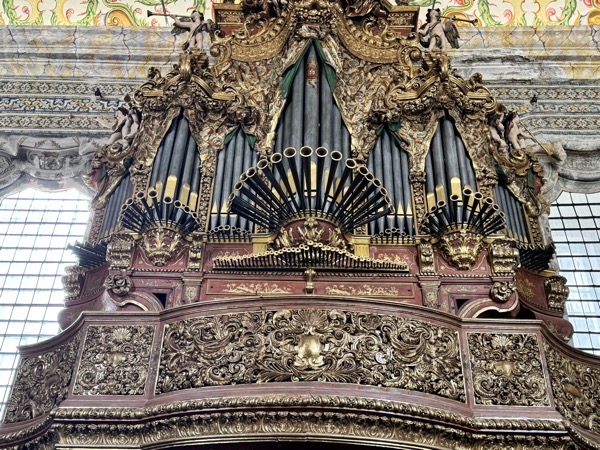
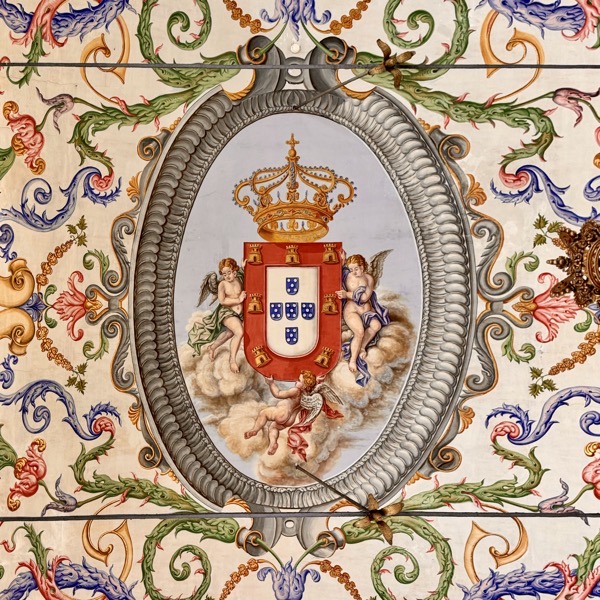
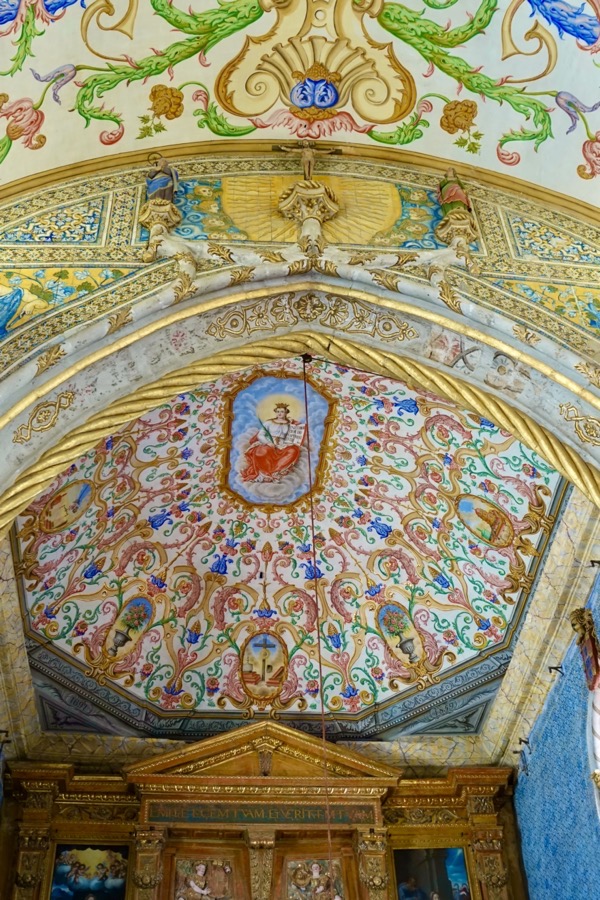
Next, our tour took us to the renowned Joanina Library (Biblioteca Joanina). On our way, we passed through a medieval jail where students who committed minor disciplinary offenses were once confined (circa 1300-1400). We then made a brief stop at a newer section of the library, where old books are being digitized.
Built between 1717 and 1728 during the reign of King John V of Portugal, the library is named in his honor. Due to its immense popularity, our visit was limited to just 15 minutes, and photography inside was prohibited.
Despite the time constraint, we were mesmerized by the library’s breathtaking interior, with its intricate woodwork, stunning frescoes, and golden Baroque-era accents. The collection housed in the library is equally impressive, containing rare manuscripts, books, and texts, some dating back to the 16th century. The library holds around 300,000 volumes, including works of great historical and scientific significance. Uniquely, a colony of bats resides there, helping to protect the rare books by keeping insects at bay.
Before we could even start to absorb the beauty of the library, our allotted time was up, and we were ushered out, leaving its sacred space behind.
—— New Section of the Joanina Library ——
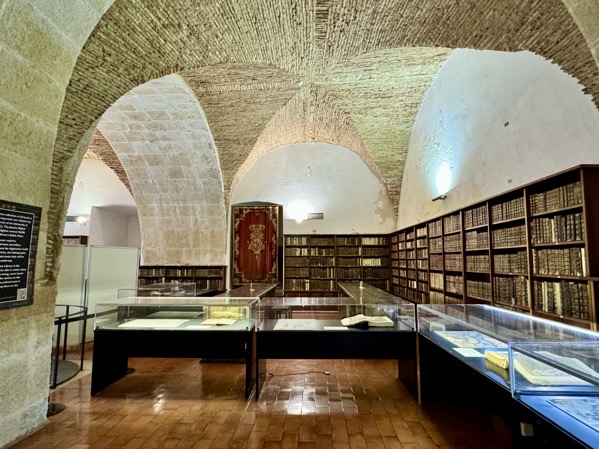
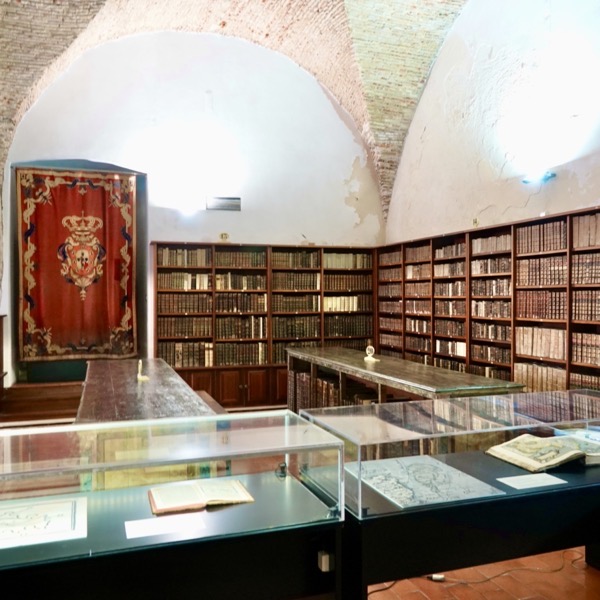
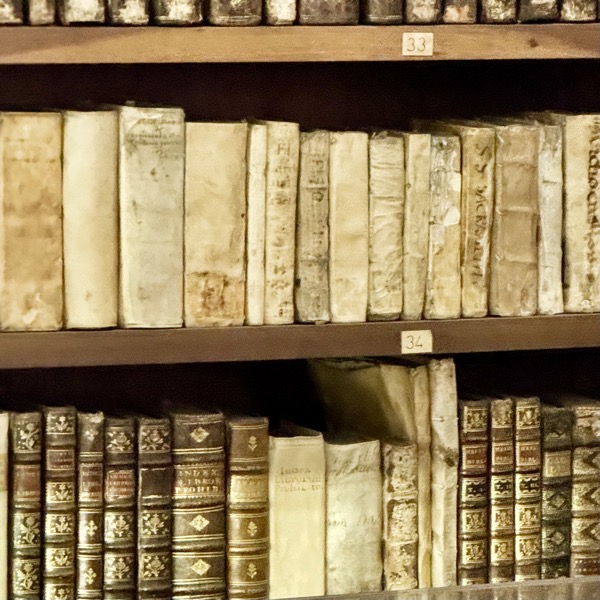
Our final university stop was at the Royal Palace (Paço Real de Coimbra). Originally built in the 12th century, it served as the residence of Portuguese royalty, particularly during the reign of King João III in the 16th century. Today, the palace houses several university departments and is a significant part of the university’s cultural heritage.
We were impressed by the architectural blend of medieval and Renaissance elements, as we viewed its offices, grand hall, and beautiful courtyards. We also enjoyed panoramic views of the city through the windows.
—— The Royal Palace Interior ——

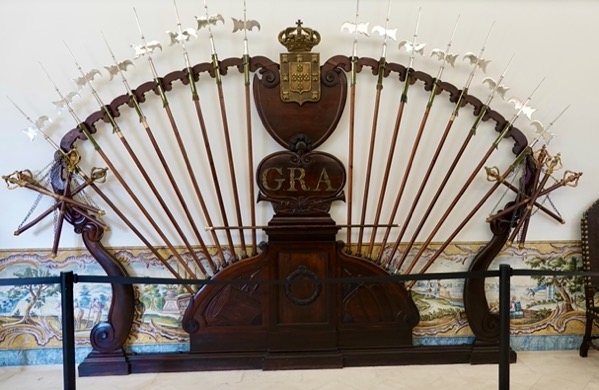
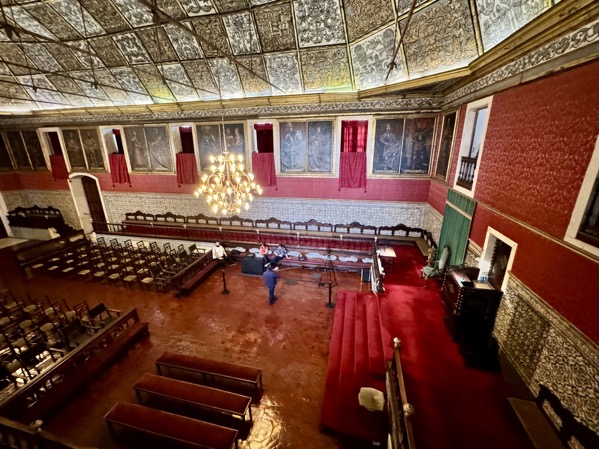
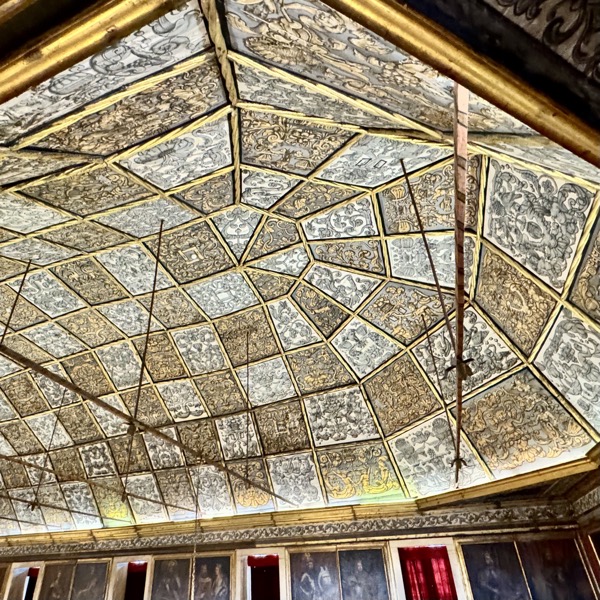
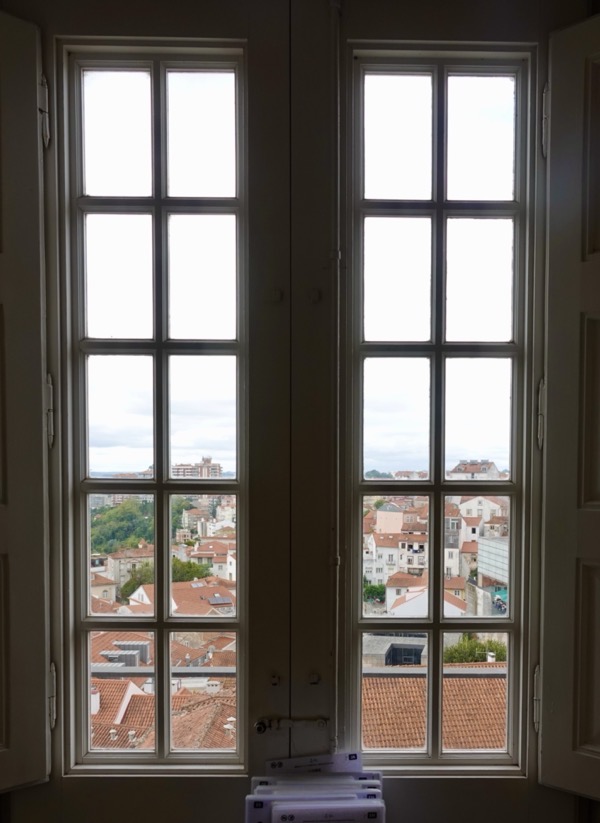
After touring the Royal Palace, we made our way back to the edge of campus, boarded the bus, and enjoyed a scenic hour-and-a-half ride to our final destination of the day: the MS Douro Elegance, docked on the Douro River at Vila Nova de Gaia. Eager to begin our river cruise, everyone excitedly boarded the ship, where we were warmly welcomed by the crew, offered a refreshing glass of juice, and guided into the lounge. There, Jane was the first to volunteer for a complimentary massage from the ship’s masseur, Bruno. After a relaxing start, Captain Renato Araujo and the ship’s crew introduced themselves and provided a thorough briefing on safety procedures.
—— Complimentary Massage by Bruno ——
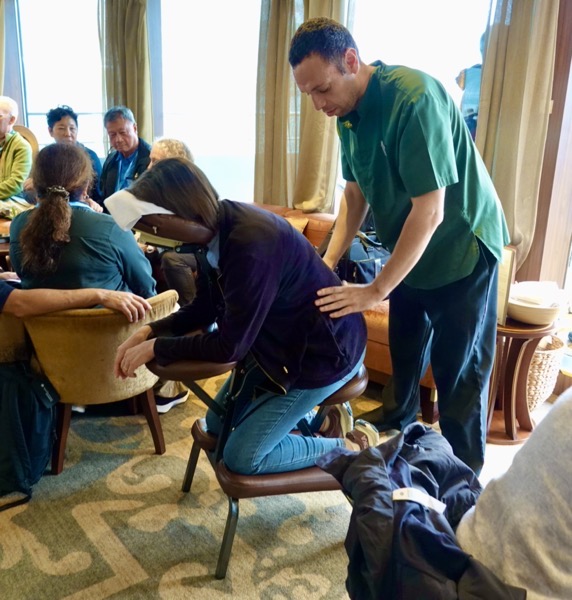
Eventually, we were escorted to our assigned rooms, where our luggage awaited us. We had the chance to unpack and unwind before the ship undocked for the Illumination Cruise, a scenic loop along the Douro River. As we sailed, we were treated to our first stunning views of Porto, with its buildings rising dramatically from the riverbanks and a network of bridges spanning the water. It was a perfect introduction to this beautiful city, with its illuminated skyline casting a magical glow over the evening.
—— Illumination Cruise on the Douro River ——
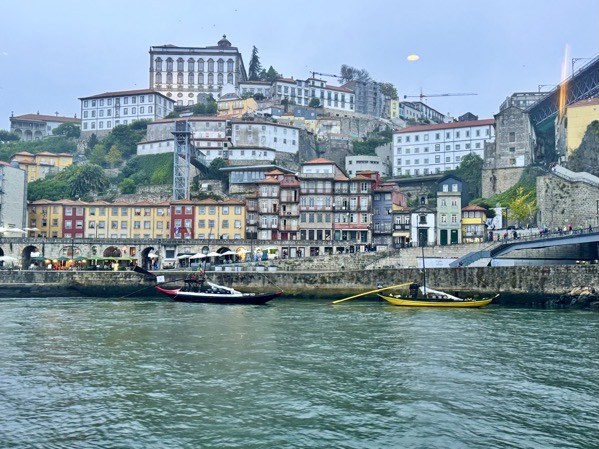
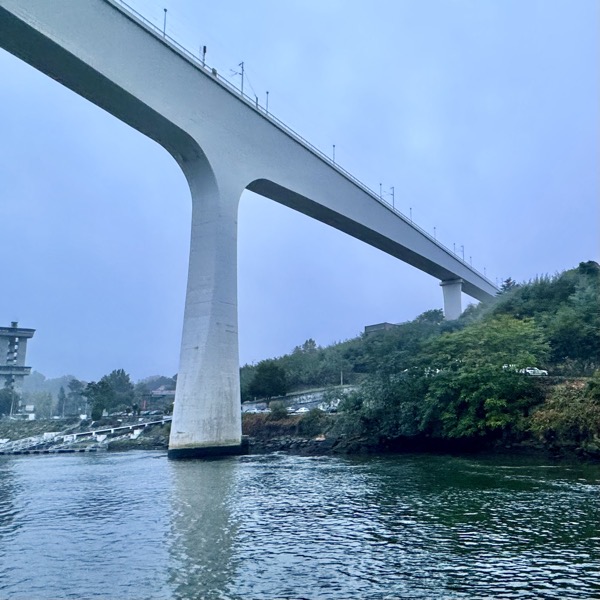

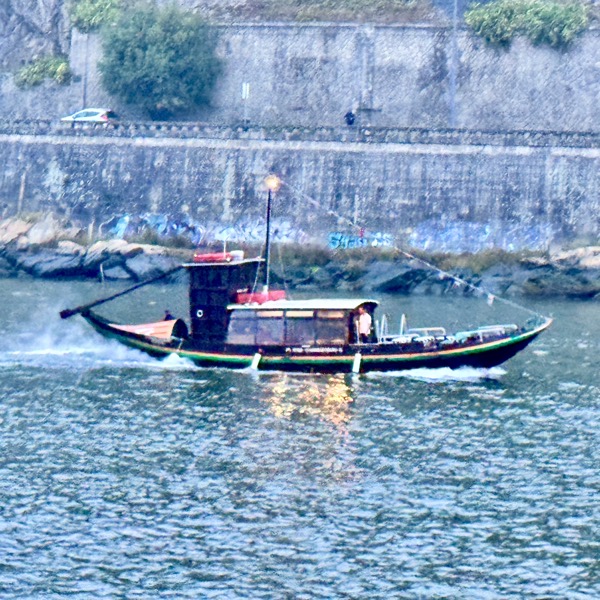
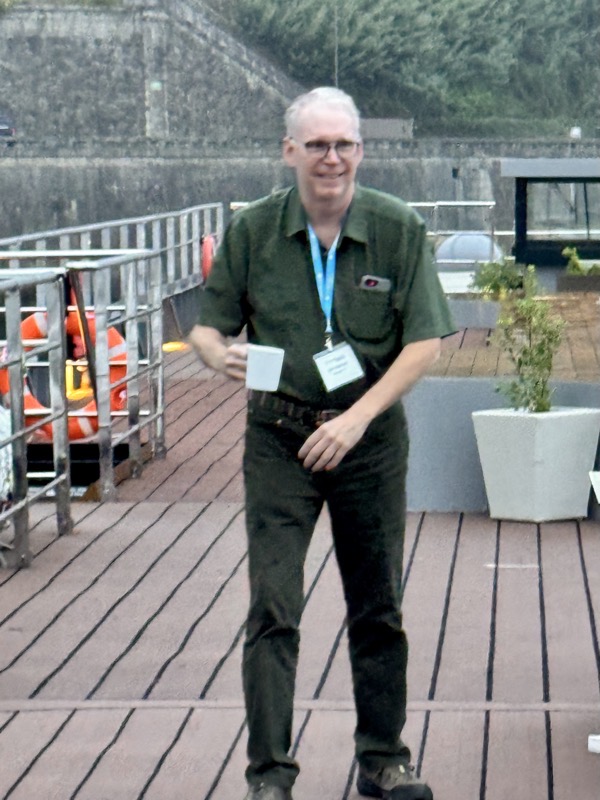
At 7:30 pm, we enjoyed a delightful dinner with Nancy and John in the ship’s restaurant on Deck 2, conveniently located just down the hall from our room. After a delicious meal (with wine), we dispersed to our rooms, ready to relax after a long and fulfilling day.